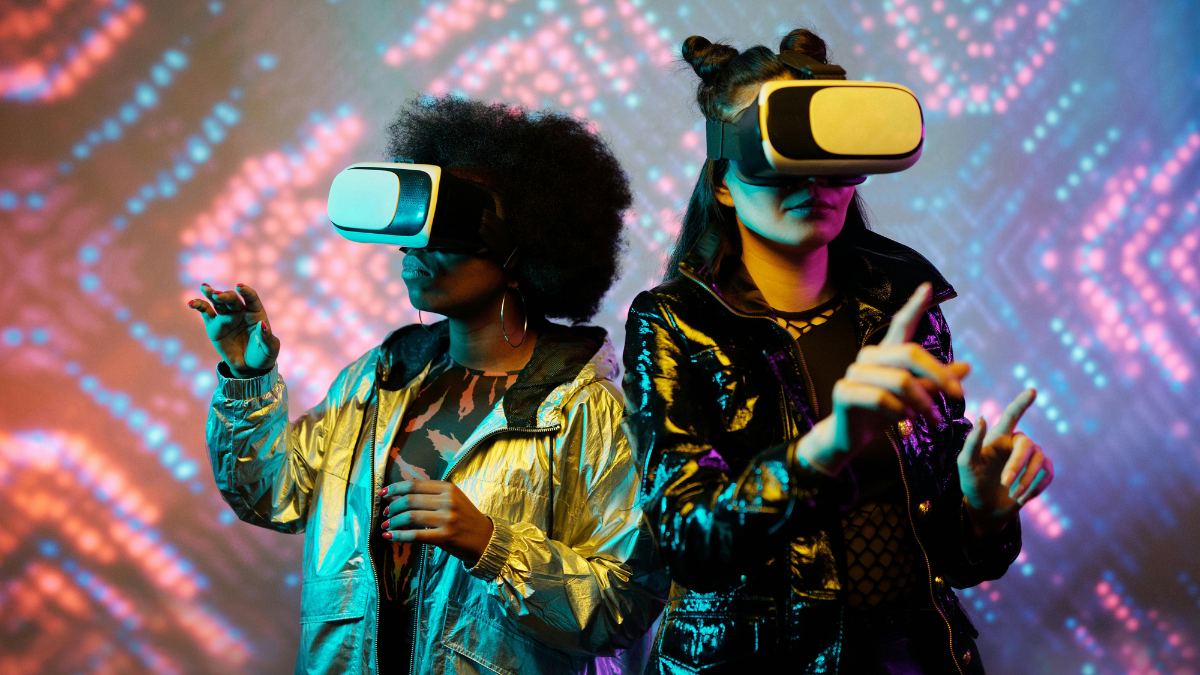Imagine trying on a full wardrobe from the comfort of your living room, seeing every detail as if the clothes were right in front of you. Or attending a front-row fashion show where models glide past you, all without leaving the comfort of your couch. This isn’t science fiction, this is happening right now, thanks to the power of extended reality (XR).
As XR technology moves from experimental to essential, fashion brands are tapping into these tools to create experiences that are not only immersive, but also reshaping the way we shop, engage, and even think about sustainability.
Apple’s Vision Pro: welcome to spatial fashion
Apple’s Vision Pro is more than just another tech gadget, it’s a revolution in how we interact with fashion. Picture this: instead of scrolling through a flat, 2D website, you’re walking through a virtual store where the clothes come alive in 3D. You can get up close, inspect fabrics, and even see how a garment moves. This is what Apple’s Vision Pro offers, a spatial shopping experience that’s as close to real life as possible without being in the store. The Vision Pro is also set to transform fashion shows. At the upcoming Etro Spring 2024 runway show during Milan Fashion Week, Vision Pro users will experience the event virtually, interacting with designs and seeing garment details up close. This marks a significant shift in how brands can reach global audiences, creating more immersive and engaging runway experiences. Gucci also made headlines by harnessing Vision Pro’s potential. Developing an immersive, documentary-style XR experience that takes users through Italy, allowing them to explore the brand’s heritage and products. This combination of storytelling and interactive retail is a powerful tool for building brand equity and deepening customer engagement.
For brands, XR isn’t just a flashy add-on; it’s a powerful marketing tool that builds stronger connections with consumers by engaging them in ways that feel personal, connected, and deeply memorable.
AR mirrors: the fitting room of the future
If Vision Pro is transforming how we experience fashion from our homes, augmented reality (AR) mirrors are changing the in-store shopping experience. No more crowded fitting rooms or long wait times, AR mirrors offer a virtual try-on experience, allowing shoppers to see how garments fit and look without ever putting them on. This is a game changer for both consumers and retailers.
Leading brands like Neiman Marcus are already using these high-tech mirrors, giving customers the ability to visualise and customise outfits instantly, much like having a personal stylist on hand. Beyond convenience, AR mirrors also drive engagement. Research from Threekit revealed AR product experiences are a whopping 200% more engaging than their non-AR counterparts. But AR mirrors don’t just enhance the shopping experience — they increase sales. One of the most valuable benefits of AR mirrors is their potential to reduce returns, a significant issue in fashion retail. By providing a realistic view of how clothes fit, virtual try-ons help customers make more informed decisions. This can reduce return rates by up to 20% and even boost sales by 30%, delivering measurable improvements to retailer margins. Plus, fewer returns mean a positive impact on sustainability, as it minimises waste and excess shipping.
AR mirrors also create experiential retail moments. Customers are drawn in by the novelty — walk in front of the mirror, and bosh — you see yourself in an entirely new outfit. This interactive, fun experience not only makes shopping more engaging but also keeps customers in-store for longer, increasing basket size and brand loyalty.
Sustainability: how AR cuts down returns and waste
Speaking of sustainability, AR mirrors and web experiences are a perfect example of how tech can make fashion greener. Every time a customer returns a piece of clothing, it creates waste — from packaging to transportation emissions and even discarded products that can’t be resold. By offering a more precise fitting experience, AR helps customers make more informed purchases, leading to fewer returns and less waste.
Incorporating AR mirrors and web experiences into retail is about more than just improving the shopping experience, it’s about building a more sustainable future for the industry. Brands like Farfetch have already embraced this with their ‘Store of the Future,’ where AR mirrors play a central role. Customers can try on different looks, experiment with styles, and even make purchases on the spot, all while reducing their environmental impact.
Conclusion: the future of fashion is immersive and sustainable
We’re standing at the crossroads of fashion and technology, and XR is lighting the way forward. Apple’s Vision Pro and AR mirrors aren’t just about cool new ways to shop — they represent a fundamental shift in how consumers and brands interact. Whether it’s creating immersive, memorable experiences or cutting down on waste and returns, these technologies offer a clear path to innovation and success.
For brands, the message is simple: to lead the future of fashion, start embracing XR. The future is immersive, personal, and sustainable — and it’s already here.
Featured image: Darlene Alderson / Pexels

